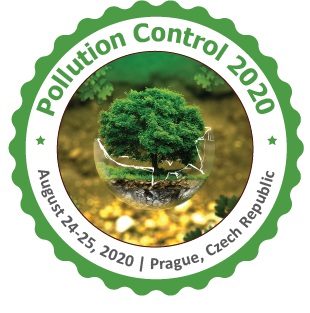
Alani, Rose
University of Lagos Akoka, Nigeria
Title: Realtime Air quality monitoring in Lagos reveals negative Health Impacts
Biography
Biography: Alani, Rose
Abstract
Economic development, urbanization, energy consumption, transportation, open incinerators, power generators, Agricultural activities and rapid population growth have been identified as anthropogenic activities contributing to air pollution in Lagos. Air pollution is a critical risk factor for noncommunicable diseases (NCDs) worldwide, causing about 24% of all adult deaths from heart disease, 29% from lung cancer, 25% from stroke, and 43% from chronic obstructive pulmonary disease (COPD), the WHO estimates show.Therefore, regular monitoring of current air quality is essential. The study investigated the concentration of Sulfur dioxide (SO2), Nitrogen dioxide (NO2), Carbon monoxide (CO), Volatile organic compounds (VOC), and Particulate Matter (PM1, PM2.5, and PM10) in three different locations in Lagos Nigeria. The study was carried out to identify the level of the pollutants in the study areas as well as the health risk associated with these pollutants. Air quality Egg was used for the monitoring at the sample locations. The concentrations of all the pollutants at the three sample locations exceeded the National Ambient Air Quality Standards (NAAQS) and WHO standard for ambient air quality at some point during the monitoring, except for PM10 and CO that remained within the NAAQS all through the sampling period. PM10 however exceeded the WHO standard at Adekunle. The level of SO2 exceeded the NAAQS and WHO limits within the sample period. This is an indication of the need for long term air quality monitoring with a sustainable plan for air pollution management. Keywords: PM, Vehicular emission, open incenaration, power generator, health risk.

